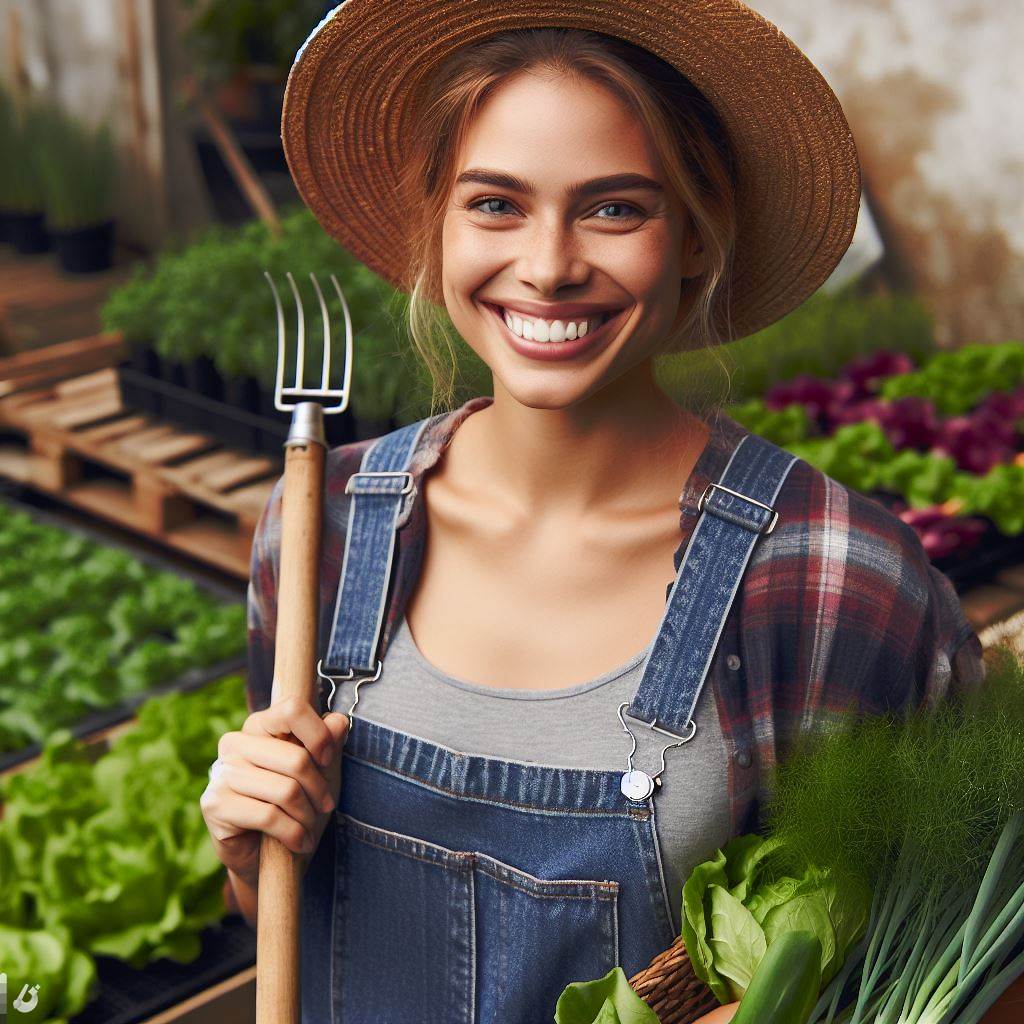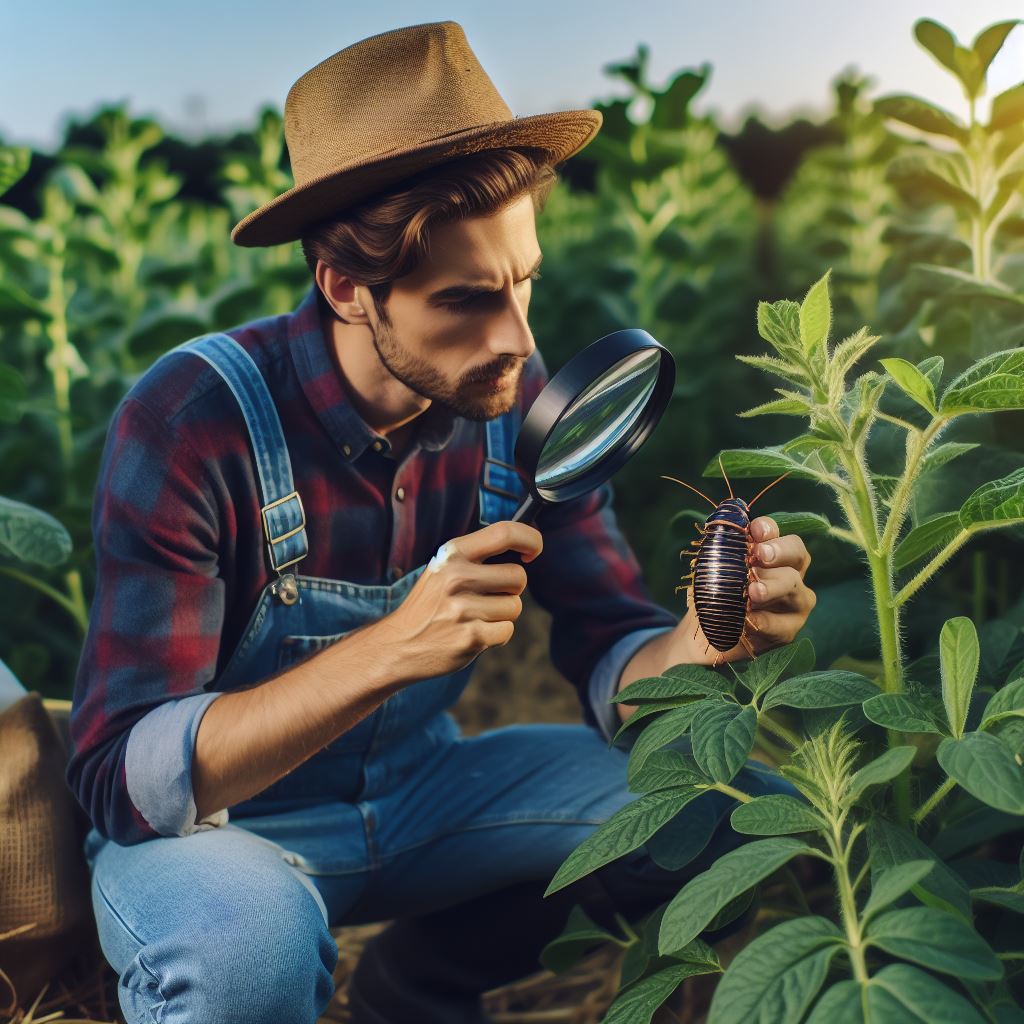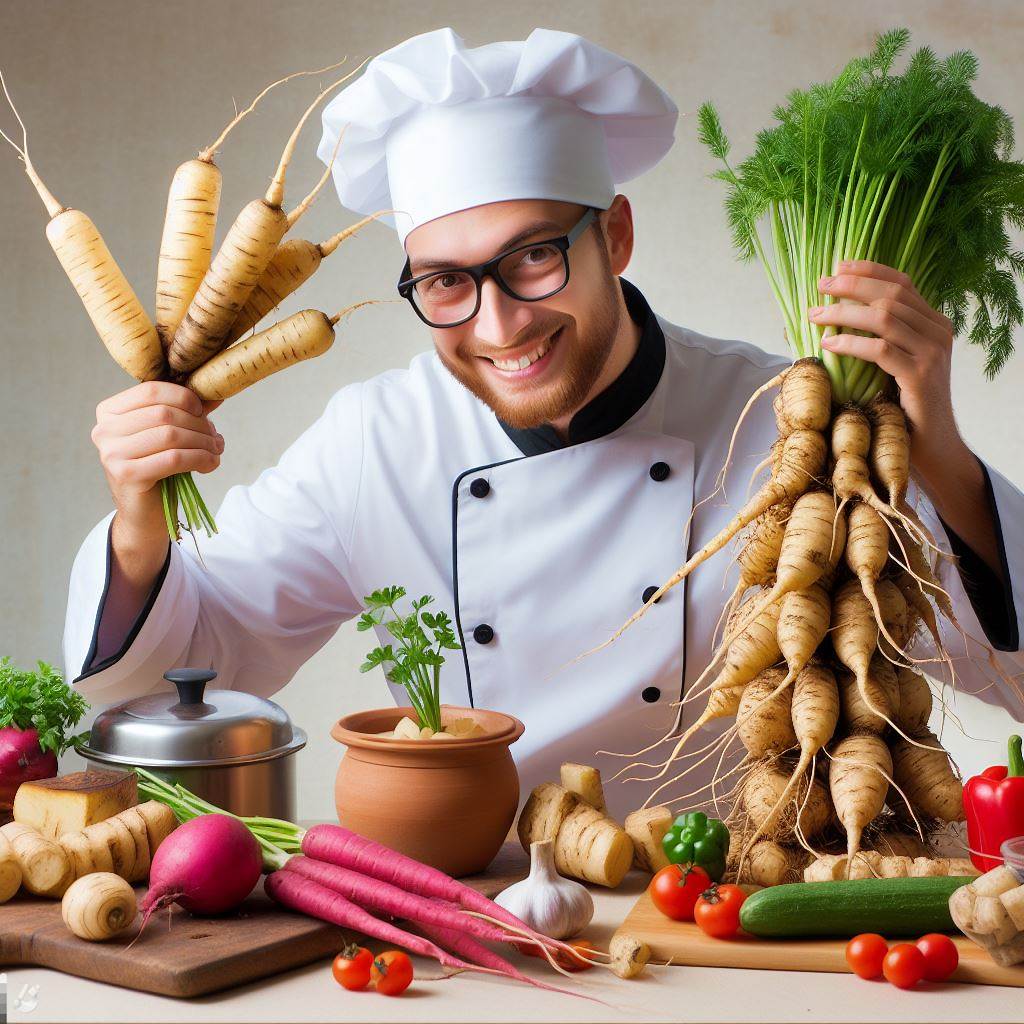Introduction
Fresh and local food is the heartbeat of a thriving community, fostering health and sustainability.
Embracing such produce not only tantalizes taste buds but also supports local economies and reduces environmental impact.
In a world saturated with processed options, the quest for freshness becomes a revolutionary act, advocating for a return to wholesome roots.
Amy’s Farming Journey
Meet Amy, a passionate farmer navigating the fields of change. Her journey embodies the essence of the farm-to-table movement, sowing seeds of community resilience.
Amy’s commitment extends beyond cultivating crops; it’s about cultivating a connection between consumers and the land.
This is no ordinary farming story — it’s a testament to the power of one person’s dedication to transforming the food landscape.
Amy’s venture into farming began as a personal mission to reconnect with nature and provide her community with unadulterated nourishment.
Through grit and green thumbs, she cultivated a diverse range of fruits, vegetables, and herbs on her farm, ensuring each harvest boasts the vibrancy of authenticity.
This section unravels Amy’s narrative, a tapestry woven with the threads of hard work, passion, and the joy of nurturing life from soil to plate.
Join us as we delve into the rich soil of Amy’s farming journey, where the roots of freshness run deep, and the harvest is a celebration of local bounty.
Background of Amy
A. Early Interest in Gardening
Amy’s passion for growing things sparked early, as a child cultivating vibrant blooms in her backyard.
She eagerly experimented with different vegetables, witnessing the miracle of seeds transforming into nourishing produce.
Amy’s youthful curiosity evolved into a profound love for gardening, influencing her career path toward sustainable farming.
B. Education and Training in Agriculture
Driven by her passion, Amy pursued a formal education in agriculture, earning a degree in sustainable farming practices.
Her studies delved into soil science, crop management, and the intricate balance between nature and cultivation.
Amy actively sought hands-on experiences, attending workshops, and engaging in internships to hone her practical skills.
C. Previous Work Experience in the Farming Industry
Amy’s journey seamlessly transitioned from academia to the bustling world of the farming industry.
She spent time working on diverse farms, cultivating a deep understanding of the challenges and triumphs in sustainable agriculture.
Amy’s experiences ranged from managing crop rotations to implementing eco-friendly pest control methods, showcasing her commitment to sustainability.
In her previous roles, Amy collaborated with local communities, fostering a sense of interconnectedness between farmers and consumers.
Through her dedication, Amy not only cultivated crops but also cultivated relationships, understanding the vital role of community in sustainable farming.
Transform Your Agribusiness
Unlock your farm's potential with expert advice tailored to your needs. Get actionable steps that drive real results.
Get StartedAs a part of her journey, Amy faced the unpredictability of weather patterns, market demands, and the continuous quest for innovative, sustainable farming practices.
Amy’s dedication to the principles of fresh and local farming solidified as she became a steward of the land.
In the next section, we will explore Amy’s establishment of her own farm and the principles that guide her towards a future of sustainable agriculture.
Read: Hydroponics: Future of Urban Farming
Amy’s Decision to Start Her Own Farm
Starting her own farm was not a decision Amy made overnight.
It was a result of various factors and challenges she had to carefully consider and overcome.
A. Factors influencing her decision
Amy’s desire to provide fresh and local food to the community served as one of the primary driving forces behind her decision.
She witnessed the abundance of processed and imported food in her area, lacking the nutritional value and taste of locally grown produce.
Moreover, Amy’s strong personal values and beliefs played a crucial role in her determination to start her own farm.
She firmly believed in the importance of sustainable agriculture, preserving the environment, and promoting healthy eating habits.
Additionally, Amy noticed the growing demand for organic produce among consumers.
People were becoming more conscious of the negative impacts of pesticides and genetically modified organisms on their health.
Recognizing this trend, Amy saw an opportunity to provide high-quality, chemical-free food to her community.
B. Challenges she faced in starting her own farm
Like any aspiring farmer, Amy encountered a series of challenges on her path to starting her own farm.
Firstly, access to land and resources was a major obstacle for Amy.
Finding suitable farmland in her area was not easy, as most available land was either too expensive or unsuitable for farming.
She had to diligently search and negotiate to secure a suitable piece of land for her farm.
Secondly, securing funds for the startup was another significant challenge.
Starting a farm requires substantial capital investment, from purchasing equipment and seeds to establishing infrastructure.
Amy had to explore various funding options, including loans and grants, to gather the necessary funds to kickstart her farming venture.
Lastly, as a first-time farmer, Amy lacked hands-on experience in managing and operating a farm.
She had to educate herself through workshops, courses, and consultations with experienced farmers to acquire the necessary knowledge and skills.
It was a steep learning curve for her, but Amy remained determined and adaptable throughout the process.
In fact, Amy’s decision to start her own farm was driven by her strong desire to provide fresh and local food, her personal values and beliefs, and the growing demand for organic produce.
Despite the challenges she faced, including limited access to land, securing funds, and her lack of experience, Amy persevered and embarked on her farming journey with great determination.
Read: Food Miles: An Eco Concern
Setting up Amy’s farm
A. Selection of suitable land
- Finding the right piece of land for Amy’s farm was crucial.
- The soil had to be fertile and well-drained, and the location had to receive adequate sunlight.
- Amy also considered proximity to markets and accessibility for transportation purposes.
B. Planning the layout and crops
- Amy meticulously planned the layout of her farm, taking into account sunlight patterns and wind directions.
- She divided the land into sections for different crops, ensuring efficient space utilization.
- Crop rotation was also an important aspect of her plan to maintain soil health and prevent disease.
C. Implementing sustainable farming practices
Amy was passionate about sustainable farming and committed to minimizing her environmental impact.
1. Organic fertilizers and pest control methods
To maintain soil fertility, Amy used organic fertilizers such as compost and manure, avoiding harmful chemicals.
For pest control, she employed natural methods like introducing beneficial insects and using traps instead of pesticides.
2. Water conservation techniques
Water being a precious resource, Amy implemented various techniques to conserve it on her farm.
She installed a drip irrigation system, ensuring that water is directly delivered to the plants’ roots, reducing wastage.
Amy also collected rainwater and used mulch to prevent water evaporation from the soil.
3. Utilizing renewable energy sources
Amy invested in renewable energy sources like solar panels to power farm operations.
This helped reduce her reliance on non-renewable energy and decreased her carbon footprint.
She also used energy-efficient equipment and machinery throughout the farm.
Implementing these sustainable practices was not only beneficial for the environment but also improved the quality of Amy’s crops.
Customers appreciated the organic produce and the fact that it was produced in an eco-friendly manner.
As Amy’s farm grew and gained recognition, other farmers in the community started taking note of her successful methods.
Amy happily shared her knowledge and encouraged them to adopt sustainable practices as well.
In short, setting up Amy’s farm required careful selection of suitable land, meticulous planning of layout and crops, and implementation of sustainable farming practices.
Amy’s commitment to organic fertilizers, water conservation, and renewable energy sources made her farm a model for sustainable agriculture.
Her efforts not only ensured high-quality produce but also inspired other farmers to follow in her footsteps.
Amy’s farming journey was a testament to the fact that sustainable practices can lead to both environmental and economic success.
Read: Heirloom vs Hybrid Produce

Growing and harvesting process
A. Crop selection and rotation
Amy takes great pride in her growing and harvesting process.
She starts by carefully selecting the crops she will cultivate on her farm.
Considering market demand, she chooses crops that will not only sell well but also thrive in the local climate conditions.
To maintain the health of her soil, Amy practices crop rotation.
This technique involves planting different crops each season to prevent the depletion of specific nutrients from the soil.
By alternating crops, Amy can ensure the fertility of her soil for years to come.
Showcase Your Farming Business
Publish your professional farming services profile on our blog for a one-time fee of $200 and reach a dedicated audience of farmers and agribusiness owners.
Publish Your ProfileB. Cultivation and maintenance of crops
Once the crops are selected, Amy puts in significant time and effort into their cultivation and maintenance.
Following organic farming techniques, she avoids the use of synthetic fertilizers and pesticides.
Instead, Amy relies on natural alternatives to nourish her crops while minimizing harm to the environment.
Regular weeding and watering are also vital components of Amy’s cultivation process.
By removing unwanted plants, she ensures that her crops receive the necessary nutrients and aren’t hindered by competition.
Additionally, Amy carefully monitors the moisture levels in her fields to maintain optimal growing conditions.
C. Harvesting methods and timeline
When it’s time for harvest, Amy employs meticulous methods to preserve the freshness and quality of her produce.
She personally hand-picks each crop, ensuring they are at the peak of their ripeness.
By physically inspecting each harvest, Amy can guarantee that only the best crops make it to her customers’ tables.
D. Collaboration with local farmers and suppliers
Amy also recognizes the value of collaboration. She actively seeks out partnerships with local farmers and suppliers.
Together, they share knowledge, resources, and experiences to overcome challenges and improve their farming practices.
This collaboration not only strengthens the community but also contributes to the growth of the local agricultural industry.
Throughout Amy’s farming journey, she continues to refine her growing and harvesting process.
Her attention to detail and dedication to sustainable practices have earned her a loyal customer base that appreciates the freshness and quality of her produce.
Amy’s commitment to her craft is evident in every aspect of her farming journey, from crop selection to collaborating with other local farmers and suppliers.
Read: Sustainable Soil Management
The Impact of Amy’s Farm on the Community
A. Increased Access to Fresh, Locally Grown Produce
Amy’s Farm has significantly improved the community’s access to fresh and locally grown produce.
Through their farm stand and local farmer’s market, residents can now easily obtain nutritious fruits and vegetables.
Not only does this promote a healthier lifestyle, but it also supports sustainable farming practices.
B. Support for Local Economy and Businesses
Amy’s Farm’s presence has greatly contributed to the growth of the local economy and businesses in the community.
By purchasing local supplies and equipment, they have fostered a symbiotic relationship with other businesses.
They have also created job opportunities, boosting employment rates and strengthening the overall economic stability.
C. Educational Opportunities for the Community
The farm serves as an educational hub for the community, offering various workshops and programs for residents, which allows them to learn about different aspects of farming and sustainable practices.
From gardening classes to farm tours, Amy’s Farm has become a valuable learning resource for all age groups.
D. Environmental Benefits of Sustainable Farming Practices
The sustainable farming practices implemented by Amy’s Farm have positively impacted the environment in numerous ways.
Through composting, organic pest control methods, and water conservation techniques, they have reduced their ecological footprint and preserved the surrounding ecosystem.
By practicing responsible land management, they have created a sanctuary for local flora and fauna.
Overall, Amy’s Farm has revolutionized the community by enhancing access to fresh produce, supporting local businesses, providing educational opportunities, and promoting sustainable farming practices.
Their commitment to environmental stewardship has not only benefited the community but also the planet as a whole.
Future Plans and Aspirations
A. Expanding operations and product offerings
Amy’s Farm has been thriving thanks to its emphasis on fresh and local produce.
With the continued success and increasing demand, Amy has set her sights on expanding her operations and product offerings.
The first step in this expansion plan is to acquire additional land adjacent to the current farm.
Amy believes that the increased land will allow her to grow a wider variety of crops and raise more livestock.
In addition to expanding the farm’s physical footprint, Amy also plans to invest in new technology and equipment.
This will enable her to streamline operations, increase efficiency, and ultimately produce even more high-quality products.
Furthermore, Amy intends to introduce new product lines.
She has noticed a growing interest in organic and specialty foods among her customers.
By adding these items to her offerings, she believes that Amy’s Farm will attract a broader customer base.
B. Community engagement initiatives
Amy has always been passionate about building connections within her community.
In line with this, she wants to implement various community engagement initiatives.
One initiative is to organize farm tours and educational programs for local schools.
Amy is aware of the importance of educating children about farming and sustainability.
She hopes that by inviting students to the farm, they can learn firsthand about the process of growing food and the importance of supporting local agriculture.
Another community engagement initiative is to host regular farmers’ markets on the farm premises.
Amy wants to provide a venue for local artisans, craftsmen, and other farmers to showcase their products.
This not only supports the local economy but also promotes a sense of community.
Additionally, Amy plans to collaborate with local restaurants and chefs.
By establishing partnerships, she can supply them with fresh produce and foster a farm-to-table movement in the community.
C. Long-term goals for Amy’s farm
Amy’s long-term goals for her farm revolve around sustainability and environmental stewardship.
One major goal is to implement regenerative farming practices.
Amy recognizes that conventional farming methods can have a negative impact on the environment.
By adopting regenerative practices such as crop rotation, composting, and natural pest control, she aims to improve soil health and reduce the farm’s ecological footprint.
Furthermore, Amy aspires to become a leading advocate for sustainable agriculture in her region.
She plans to participate in local and regional forums, share her expertise, and encourage other farmers to embrace sustainable practices.
Amy envisions creating a network of like-minded farmers who can collaborate and support each other.
Lastly, Amy dreams of establishing an educational center on her farm.
This center would offer workshops, seminars, and apprenticeship programs to educate and inspire individuals interested in sustainable farming.
She envisions it as a hub for knowledge and innovation, fostering a new generation of farmers who prioritize sustainability.
In essence, Amy’s farming journey is a testament to her passion for fresh, local food and her commitment to sustainability.
With her plans to expand operations and product offerings, engage with the community, and achieve long-term goals, Amy is poised to make an even greater impact in the farming industry.
Conclusion
A. Recap of Amy’s Farming Journey
Amy’s farming journey began with a dream – cultivating a sustainable, local food source.
Inspired by a passion for agriculture, Amy transformed a humble plot into a thriving farm.
Facing challenges, she embraced each lesson, nurturing her crops with dedication and resilience.
Through hard work, Amy witnessed her farm flourish, a testament to the rewards of perseverance in farming.
B. The Importance of Supporting Local Farmers
Supporting local farmers, like Amy, is crucial for fostering a resilient and vibrant community.
By choosing fresh and local produce, consumers contribute to sustainable farming practices.
Amy’s success story highlights the impact individuals can make by prioritizing local products, creating a ripple effect that sustains not only farms but the entire local economy.
C. Encouraging Readers to Learn More and Visit Amy’s Farm
To truly grasp the beauty of Amy’s farming journey, we encourage readers to delve deeper.
Visit Amy’s farm, witness the dedication firsthand, and learn about the intricate processes that bring fresh produce to your table.
Engaging with local farmers not only connects you with the source of your food but also fosters a sense of community and appreciation for the hard work behind every harvest.
In closing, Amy’s farming journey is a testament to the potential within local agriculture.
Let’s celebrate her success by actively supporting local farmers, making conscious choices, and embracing the rich, sustainable bounty they provide.
Visit Amy’s farm, and be a part of the movement towards a fresher, more connected, and sustainable future.




